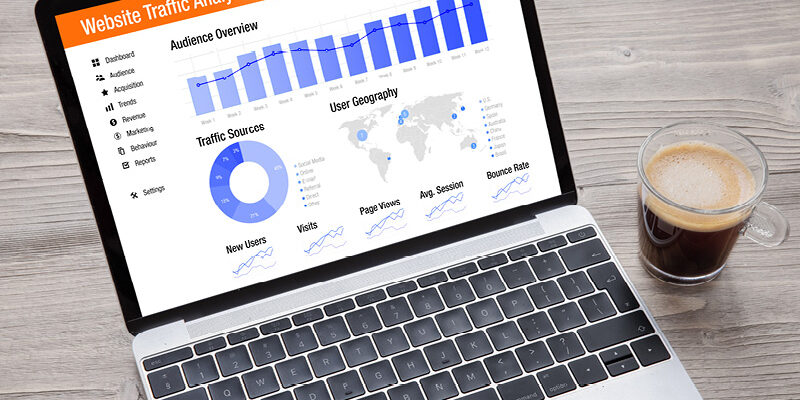Understanding Google Analytics 4: Unleashing Business Insights in the Digital Age
In the ever-evolving landscape of the digital world, data has become the currency of success for businesses both big and small. To thrive in this highly competitive environment, enterprises must harness the power of data to gain valuable insights into their customers’ behavior, preferences, and interactions. Among the various tools available, Google Analytics 4 (GA4) has emerged as a leading platform that promises to revolutionize the way businesses understand and engage with their audience. In this article, we will delve into the fundamentals of Google Analytics 4 and explore how it can be effectively leveraged to make data-driven decisions, optimize marketing strategies, and drive growth in your business.
If you’ve been using Google’s Universal Analytics, that platform stopped processing information as of July 1, 2023. You’ll be able to access that data until at least January 2024. In most cases, Google automatically created a G4 property to align with any property you already had in your account, however you should log in and make sure the migration was complete. You can also take this time to leverage some of the new features available in the G4 platform.
IMPORTANT – you must update the Google Analytics tracking code on your website if you’ve been using the standard Universal Analytics tracking code. If not, Google Analytics will stop capturing data associated with your website.
What is Google Analytics 4?
Google Analytics 4, often abbreviated as GA4, is the latest iteration of the popular web analytics service offered by Google. Releasing in late 2020, it represents a significant shift from its predecessor, Universal Analytics, offering a more comprehensive and forward-looking approach to data analysis. GA4 aims to provide businesses with a unified view of customer interactions across various devices and channels, enabling them to gain a deeper understanding of the customer journey and make better-informed decisions.
Key Features and Benefits of GA4:
- Enhanced User-Centric Approach: Unlike Universal Analytics, which focused primarily on tracking sessions and pageviews, GA4 centers around individual user behavior. It uses an event-based model to track specific interactions, allowing businesses to gain insights into how users engage with their website or app on a granular level.
- Cross-Platform and Cross-Device Tracking: With the proliferation of devices, customers often switch between mobile, desktop, and other platforms. GA4’s cross-platform tracking capabilities enable businesses to follow a user’s journey seamlessly across different devices, providing a holistic view of their interactions.
- AI-Driven Insights: Google Analytics 4 integrates machine learning to offer more robust and actionable insights. It automatically analyzes data patterns, customer segments, and churn probabilities, allowing businesses to identify opportunities and potential issues more efficiently.
- Deeper Integration with Google Ads: GA4 offers improved integration with Google Ads, enabling businesses to create more targeted and effective ad campaigns based on user behavior data.
- Improved Data Privacy and Compliance: In an era where data privacy is paramount, GA4 is designed to be more privacy-friendly. It allows businesses to collect and utilize data in compliance with global regulations, safeguarding user information and fostering trust.
Using Google Analytics 4 for Your Business:
Now that we have a brief understanding of what GA4 offers, let’s explore how businesses can utilize this powerful tool to optimize their strategies and drive success.
- Seamless Implementation and Setup:
Getting started with GA4 is relatively straightforward. Businesses can create a new GA4 property alongside their existing Universal Analytics property or set up GA4 as the primary tracking method for their website or app. Once the implementation code is added, GA4 will start collecting data immediately, providing businesses with access to real-time insights.
- Define Key Metrics and Goals:
To make the most of GA4, businesses should determine their key performance indicators (KPIs) and establish specific goals. Whether it’s tracking e-commerce transactions, form submissions, or user engagement, defining clear objectives will help focus data analysis efforts and measure success accurately.
- Explore the User-Centric Reports:
GA4’s user-centric reporting provides a wealth of information on individual user behavior. The “User Explorer” report allows businesses to inspect the actions of a single user, providing valuable insights into their interactions, preferences, and potential pain points. The “Audience” report offers segmentation capabilities, enabling businesses to analyze different user groups and tailor their marketing strategies accordingly.
- Leverage AI-Driven Insights:
The integrated machine learning capabilities of GA4 offer a competitive advantage to businesses. The “Insights” feature automatically identifies significant trends, anomalies, and opportunities within the data, presenting them in a digestible format. Leveraging these insights can help businesses make data-driven decisions promptly and effectively.
- Utilize Enhanced Ecommerce Tracking:
For online retailers, GA4’s enhanced ecommerce tracking provides valuable data on the entire customer journey, from product views to purchases. This data can be used to optimize the online shopping experience, identify popular products, and uncover potential bottlenecks in the sales funnel.
- Harness Cross-Platform Tracking:
With the majority of users switching between devices during their online journey, understanding cross-platform behavior is vital. GA4’s cross-platform tracking offers a seamless view of user interactions, enabling businesses to optimize their marketing efforts across various touchpoints.
- Optimize Marketing with Google Ads Integration:
GA4’s integration with Google Ads empowers businesses to create more targeted and relevant ads. By analyzing user behavior data, advertisers can identify high-value audiences and create personalized campaigns that drive better results.
- Monitor User Engagement:
Engaged users are more likely to convert and become loyal customers. GA4 provides detailed metrics on user engagement, such as scroll depth, video interactions, and outbound clicks. Monitoring these interactions helps businesses identify engaging content and optimize the user experience.
Google Analytics 4 is a game-changer in the world of data analytics, offering businesses a comprehensive and user-centric approach to understanding their audience. By leveraging its powerful features, such as cross-platform tracking, AI-driven insights, and enhanced ecommerce tracking, businesses can make better-informed decisions, optimize their marketing strategies, and ultimately drive growth. Embracing GA4 as a crucial tool in the digital age can provide the competitive edge needed to succeed in today’s data-driven landscape. So, if you haven’t already, it’s time to harness the full potential of Google Analytics 4 for your business and unlock a world of valuable insights and opportunities.







